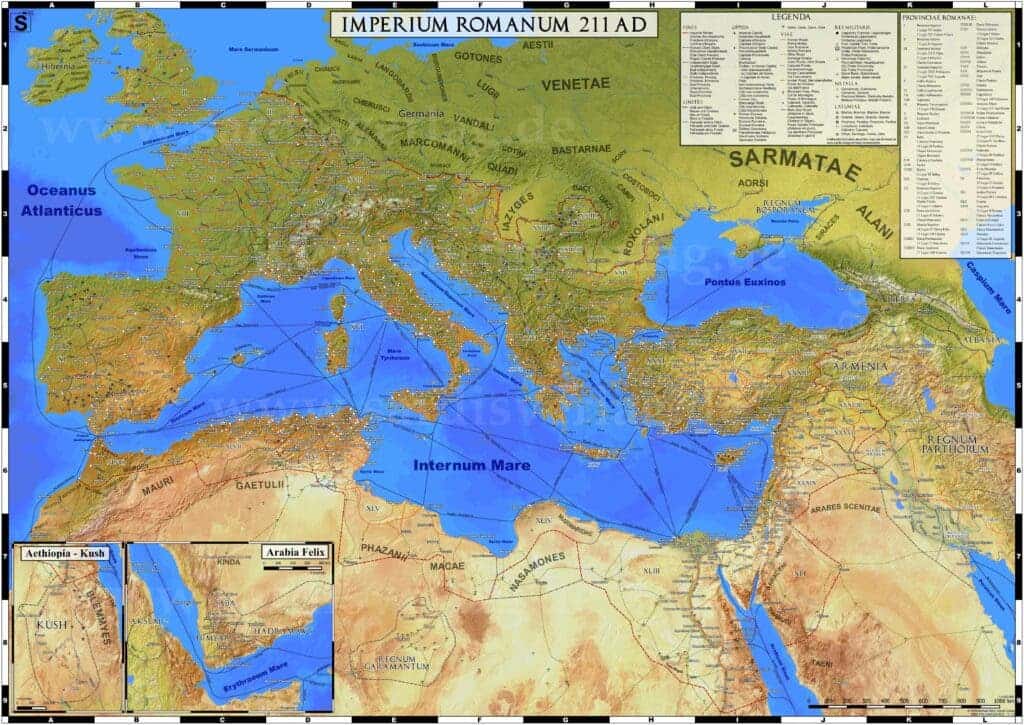
Stretch above is one of the most interesting maps of the Roman Empire ever made, all carted in detail using modern computational techniques. It shows what the great empire used to look like during its period of maximum expansion under the reign of Septimius Severus, about 211 CE. As you can notice, the Romans’ domain covered much of Europe, from the Atlantic to the Ural Mountains and from modern-day Scotland to the Sahara or the Arabian Gulf.
At the height of imperial power, Rome had 55 to 60 million subjects — that’s if you count the women, slaves, and other classes of people under Roman rule who weren’t technically considered citizens. Overall, that’s 15% of the world’s population at the time.
Most of the population of the Roman Empire lived within easy reach of the Mediterranean, and the imperial government promoted and protected sea trade and naval communications between the various parts of the empire. The map made by Sardis Verlag, a publishing house in Germany, elegantly illustrates some of the most used sea trade routes. Not incidentally, they all join at some point with Rome. The phrase ‘all roads lead to Rome’ was definitely rooted in history.
Although it could be relatively dangerous, sea transport was much faster than over-land carriage. There had been sea-borne commercial empires in the Mediterranean Sea for well over two thousand years before Roman domination but the Romans worked to keep the sea clear of pirates and built lighthouses, as well as large and sheltered harbors for the great commercial cities maintained by that trade. One might go so far as to say that the existence of the Roman Empire depended on the unity of the Mediterranean or, as the Romans called it, Mare nostrum, “Our Sea.”
After Septimius Severus died, all four emperors that followed were assassinated in short succession. Rome at the time became a monster too big for its own good. Corruption had eroded the empire and it would culminate with the Crisis of the Third Century, which saw the empire almost obliterated at the hand of civil war and foreign invaders.
Here are some more tidbits from the map below.
- Legend in English, German, French and Italian,
- All nations and provinces with accurate borders and their respective capitals,
- Independent non-urban tribes and peoples in the vicinity of the Roman Empire,
- In addition to the capitals, the map contains the locations of over 870 Roman cities and settlements within the Roman Empire and more than 90 cities and settlements outside of the Empire,
- The headquarters of all 33 active legions,
- Linear barriers, such as Hadrian’s Wall and the Limes Germanicus,
- The 28 main and auxiliary bases of the praetorian and provincial fleets,
- Roman road network totaling more than 120.000 km,
- Caravan and trade routes,
- Major sea routes, including traveling times in the Mediterranean Basin,
- 90 exporting quarries and 130+ mines,